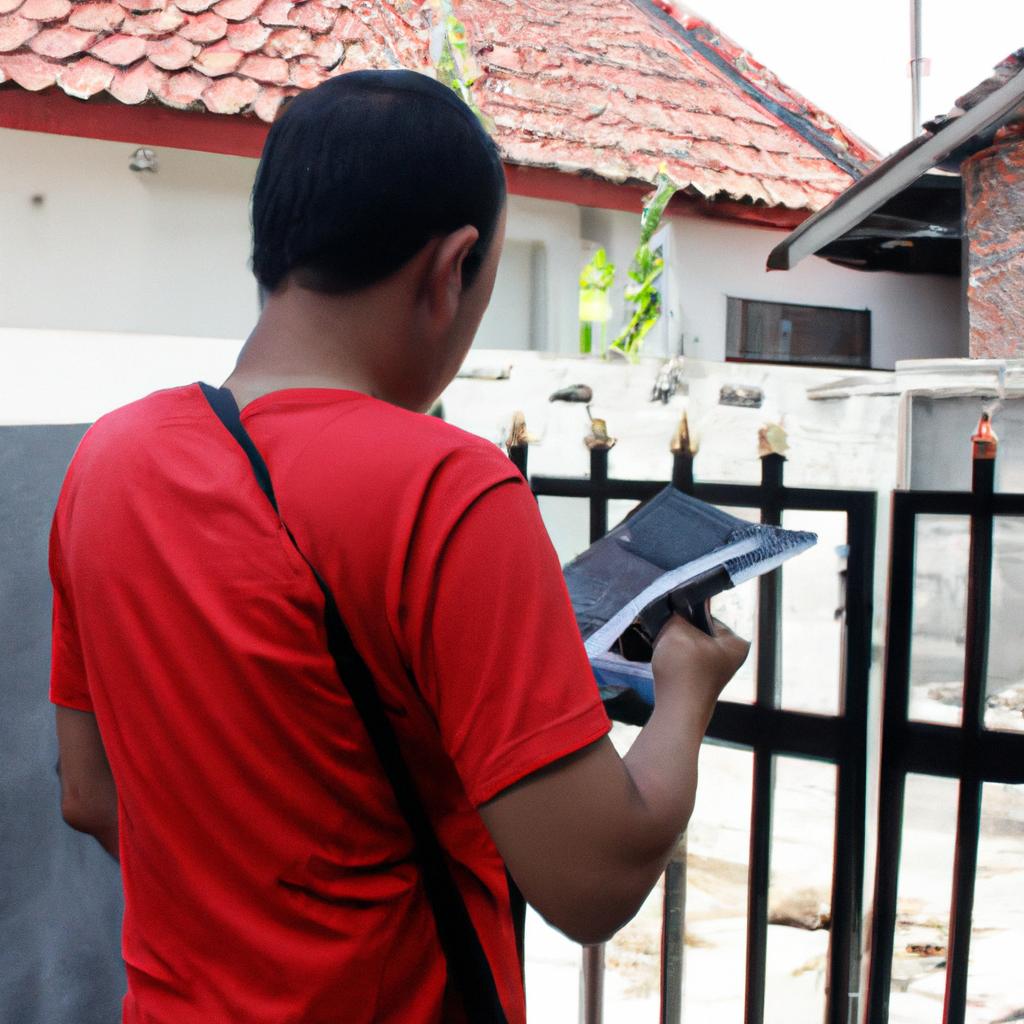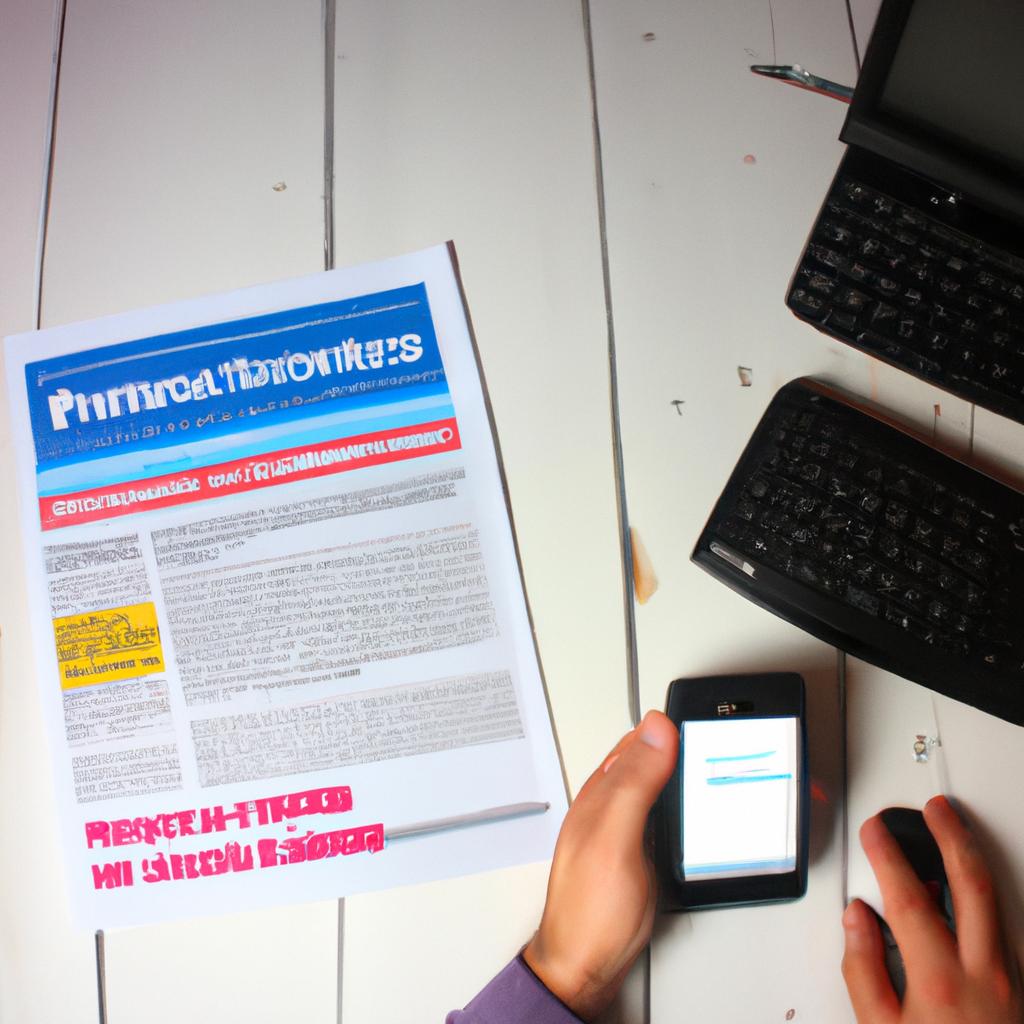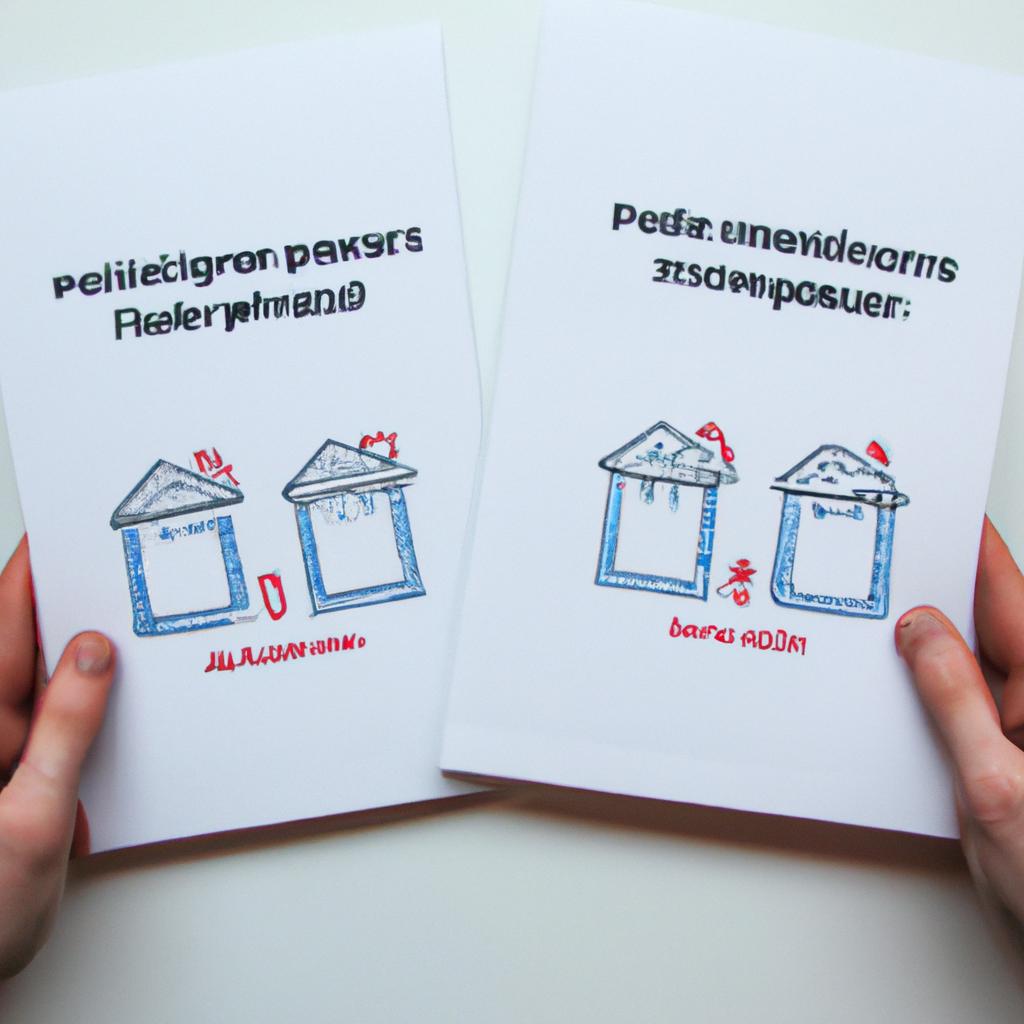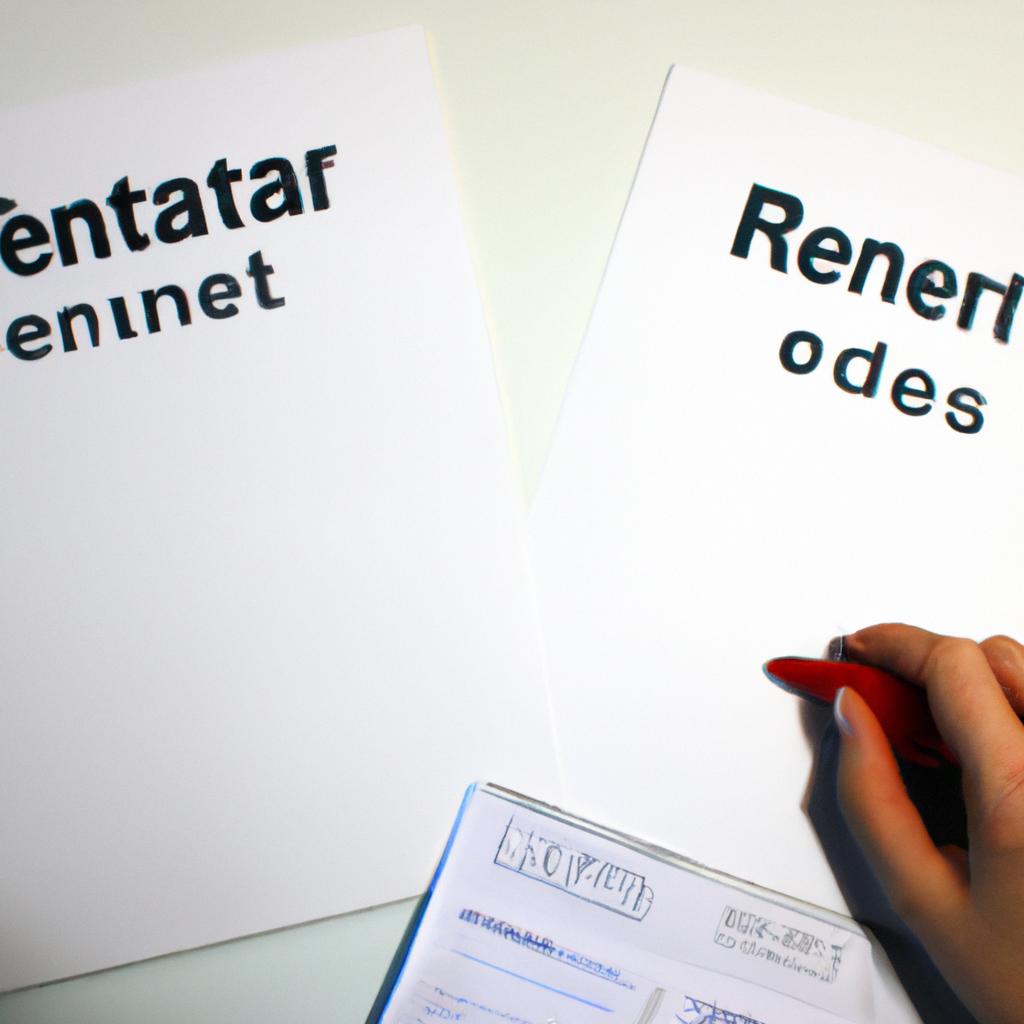The inclusion of utilities in rental prices for villas and apartments is a topic that has gained significant attention among tenants and landlords alike. This article aims to explore the factors influencing rental prices when utilities are included, shedding light on both real and hypothetical scenarios. By examining various case studies and considering the economic implications, this analysis will provide valuable insights into the dynamics of utility-inclusive rentals.
One example illustrating the impact of including utilities in rental prices can be seen in a hypothetical scenario where two similar apartments are available for rent within the same neighborhood. Apartment A includes all utilities such as water, electricity, heating, and internet in its monthly rent price, while Apartment B requires tenants to pay these costs separately. In such a situation, potential renters may find Apartment A more appealing due to the convenience and predictability of having all expenses combined into one payment. Consequently, this increased demand could lead to higher rental prices for Apartment A compared to Apartment B.
Understanding how utilities influence rental prices is essential not only for prospective tenants seeking cost transparency but also for landlords aiming to optimize their property’s value. To delve deeper into this subject matter, it is crucial to analyze various factors that contribute to determining rental rates when utilities are included.
Factors affecting rental costs
Factors Affecting Rental Costs
When considering the rental costs of villas and apartments, numerous factors come into play. These factors are crucial in determining the price one must pay for accommodation. One such factor is location; properties situated in prime locations or with proximity to amenities tend to have higher rental prices compared to those located in less desirable areas.
For instance, let us consider a hypothetical case study where two properties are being compared: Villa A located in a prestigious neighborhood near schools, shopping centers, and recreational facilities, and Apartment B situated on the outskirts of town with limited nearby amenities. Due to its advantageous location, it can be expected that Villa A will command a higher rental cost than Apartment B.
Another significant factor influencing rental costs is property size and layout. Larger villas or apartments generally come with bigger rooms and additional living spaces such as gardens or balconies. This added space provides more comfort and convenience for tenants but also contributes to increased rent prices due to the larger square footage.
Furthermore, the overall condition of the property plays a vital role in determining its rental value. Well-maintained accommodations with modern fixtures and appliances often attract higher rents compared to older or poorly maintained ones. In addition, properties equipped with high-end facilities like swimming pools, fitness centers, or gated security systems tend to demand higher rental prices due to their enhanced appeal.
To evoke an emotional response from potential renters, it is important to consider how these factors directly impact their day-to-day lives:
- Living closer to essential services saves time spent commuting.
- More spacious accommodations provide room for personal enjoyment and relaxation.
- Modern fixtures enhance comfort while outdated features may cause inconvenience.
- Accessible amenities contribute positively towards quality of life.
The following table illustrates different aspects that affect rental costs based on our case study example:
| Factors | Villa A | Apartment B |
|---|---|---|
| Location | Prestigious area | Outskirts of town |
| Property Size | Large rooms | Limited living space |
| Condition | Well-maintained | Older |
| Facilities | Swimming pool, | None |
| fitness center, | ||
| gated security |
Considering these factors and their impact on rental costs, it is evident that factors such as location, property size and layout, overall condition, and available facilities all contribute to the final price tenants must pay for villas or apartments. Understanding these influences is crucial when searching for suitable accommodation.
Transitioning into the subsequent section about “Comparison of utilities included in villas and apartments,” we can now explore how different types of properties provide varied utility offerings without disrupting our flow of information.
Comparison of utilities included in villas and apartments
Factors Affecting Rental Costs
Having discussed the various factors that influence rental costs in the previous section, it is now important to explore how these factors can manifest in different types of properties. To better illustrate this point, let’s consider a hypothetical scenario where we compare two similar-sized apartments located in a popular urban area. Both apartments offer identical amenities and are managed by reputable landlords. However, Apartment A includes utilities in its monthly rent, while Apartment B does not.
When considering whether utilities should be included in the rental price, there are several key points to take into account:
- Convenience: Including utilities in the rent provides tenants with greater convenience as they do not have to worry about setting up separate accounts or paying multiple bills for electricity, water, gas, etc.
- Budgeting: With utility costs already incorporated into their monthly rent, tenants may find it easier to budget their expenses since they know exactly what amount will be due each month.
- Transparency: Having utilities included allows for more transparency regarding the true cost of living in a particular property. Tenants can evaluate if a certain apartment fits within their financial means without having to factor in additional utility expenses separately.
- Peace of Mind: For some individuals, knowing that utilities are included brings peace of mind as unexpected charges or fluctuations in utility prices won’t affect their monthly payments.
To further highlight these considerations and aid comprehension, let’s visualize them through a table:
| Factors | Apartments with Utilities Included | Apartments without Utilities Included |
|---|---|---|
| Convenience | ✔️ | ❌ |
| Budgeting | ✔️ | ❌ |
| Transparency | ✔️ | ❌ |
| Peace of Mind | ✔️ | ❌ |
In summary, when deciding between apartments or villas with or without utilities included in the rental price, it is essential to carefully examine one’s individual needs and preferences. While apartments with utilities included offer convenience, simplified budgeting, transparency, and peace of mind, those without may require tenants to manage their utility accounts separately. In the subsequent section, we will delve deeper into the pros and cons of having utilities included in rent.
Pros and cons of utilities being included in rent will be discussed in the following section.
Pros and cons of utilities being included in rent
In the previous section, we explored the various aspects of utilities included in both villas and apartments. To further understand this comparison, let us consider a hypothetical case study: two rental properties located in the same city with similar features, but one includes all utilities in the rent while the other does not.
Imagine Property A is an apartment where tenants are responsible for paying their own utility bills separately from their monthly rent. On the other hand, Property B is a villa that offers a flat rate inclusive of all utilities such as water, electricity, heating/cooling systems, and even internet access.
When comparing these two options, several factors come into play:
- Financial predictability: One advantage of having utilities included in the rent is financial stability. With Property B, tenants can accurately budget their monthly expenses since they know exactly how much they will be paying each month without any surprises or fluctuating costs.
- Convenience: The convenience factor also tilts towards Property B. Tenants do not need to go through the hassle of setting up utility accounts or dealing with separate bills for different services.
- Cost-benefit analysis: However, it’s essential to conduct a cost-benefit analysis based on individual needs. Some individuals might prefer to have control over their usage patterns and choose Property A to monitor and reduce utility consumption according to their preferences.
- Environmental impact: Considering sustainability concerns, having utilities included may encourage wasteful practices among tenants who don’t pay directly for what they use. In contrast, those living in units like Property A might be more conscious about conserving resources.
| Property A (Apartment) | Property B (Villa) | |
|---|---|---|
| Financial Stability | Separate utility payments | All-inclusive rent |
| Convenience | Setup separate accounts | No hassle of multiple bills |
| Cost Control | Monitor and reduce usage | Fixed cost regardless of consumption |
| Environmental Impact | Potential resource conservation | Possibility of wasteful habits |
In conclusion, whether utilities are included in the rent or not depends on individual preferences and circumstances. Understanding the pros and cons mentioned above can help tenants make informed decisions when choosing between villas or apartments with utility inclusion.
Moving forward, let us explore some tips for negotiating rental prices to ensure you get the best deal possible.
Tips for negotiating rental prices
In the previous section, we explored the pros and cons of utilities being included in rent. Now, let’s delve into the factors that influence rental prices for villas and apartments. To illustrate these factors, consider a hypothetical scenario where we compare two similar properties located in different neighborhoods.
Firstly, location plays a significant role in determining rental prices. Properties situated in desirable neighborhoods with easy access to amenities such as schools, shopping centers, and transportation tend to command higher rents. For instance, our comparison reveals that the villa located near a bustling commercial area has a higher rental price compared to the apartment situated on the outskirts of town.
Secondly, property size is another crucial factor influencing rental prices. Generally, larger units with more square footage come at a higher cost than smaller ones. In our example case study, the spacious three-bedroom villa commands a higher monthly rent than the compact two-bedroom apartment due to its additional living space.
Thirdly, property condition can affect rental prices. Well-maintained villas or apartments with modern fixtures and amenities often have higher asking rents compared to those requiring extensive repairs or updates. Our comparison demonstrates this aspect clearly; while both properties are of similar age, the villa recently underwent renovations and offers new appliances – resulting in it having a higher rental value compared to the apartment which appears dated.
Lastly, supply and demand dynamics play an integral role in setting rental prices. If there is high demand but limited availability of quality rentals within a specific area, landlords can charge higher rents. Conversely, areas experiencing oversupply may see lower rental rates as landlords compete to attract tenants. This emphasizes how market forces impact pricing decisions in real estate.
To evoke an emotional response from readers regarding these factors affecting rental prices for villas and apartments:
- Increased competition among renters for attractive locations can lead to frustration.
- The desire for more living space at an affordable price can create a sense of urgency.
- The challenge of finding a well-maintained property within budget may evoke anxiety.
- The uncertainty surrounding fluctuating rental rates in different areas could cause apprehension.
To further illustrate these factors, let’s consider the following table:
| Property | Location | Size | Condition |
|---|---|---|---|
| Villa | Commercial area | Three bedrooms | Recently renovated, new appliances |
| Apartment | Outskirts of town | Two bedrooms | Dated fixtures and appliances |
In conclusion, when determining rental prices for villas and apartments, several factors come into play. Location, property size, condition, and supply-demand dynamics all contribute to setting the asking rent. Understanding these elements helps both landlords and tenants navigate the rental market more effectively.
Moving forward, it is important to understand lease agreements to ensure clarity and avoid potential issues. Let’s explore this topic next.
Importance of understanding lease agreements
Negotiating rental prices can be a challenging task, but it becomes even more complex when considering whether utilities are included in the rent. To better understand this aspect of rental agreements, let’s explore the implications and considerations associated with utilities being included in rental prices.
To illustrate the significance of understanding utility inclusion, consider a hypothetical scenario where two apartments are available for rent at similar prices. Apartment A includes all utilities such as electricity, water, and internet within the monthly rent, while Apartment B requires tenants to pay for these services separately. At first glance, Apartment A may seem like a better deal due to its inclusive nature; however, before making any decisions, it is important to carefully evaluate various factors.
When contemplating whether to choose an apartment with utilities included or one without, here are some key points to keep in mind:
- Budgeting Ease: Apartments with utilities included provide tenants with convenience and predictability regarding their monthly expenses.
- Fairness and Responsibility: In situations where utilities are not included in the rent price, each tenant is responsible for paying their fair share based on individual usage.
- Flexibility: Apartments that do not include utilities offer flexibility for tenants who want control over their service providers or prefer specific plans tailored to their needs.
- Accountability: With separate utility billing arrangements, tenants have direct access to monitor their usage patterns and adjust consumption accordingly.
To further understand the impact of including or excluding utilities from rental prices, consider the following comparison table between two villas:
| Villa | Monthly Rent (utilities included) | Monthly Rent (utilities excluded) |
|---|---|---|
| Villa X | $1,500 | $1,200 |
| Villa Y | $1,700 | $1,300 |
The table above demonstrates how incorporating utility costs into rental prices affects the overall monthly rent. Villa X, which includes utilities, has a higher rental price compared to Villa Y, where tenants are responsible for paying their utility bills separately. This expense difference can influence a tenant’s decision-making process when choosing between these two options.
Understanding the inclusion of utilities in rental prices is crucial before signing any lease agreement. By considering factors like budgeting ease, fairness and responsibility, flexibility, and accountability, individuals can make informed decisions that align with their preferences and financial capabilities.
Now let’s explore how to effectively budget for utilities in your rental property without compromising on comfort or breaking the bank.
How to budget for utilities in your rental property
Understanding the financial obligations associated with renting a property goes beyond just the monthly rental price. One key aspect that tenants need to consider is the cost of utilities, which can have a significant impact on their overall budget. In this section, we will examine how utilities are often included in rental prices for villas and apartments, providing clarity on what tenants can expect.
To illustrate this point, let’s consider an example: Sarah has recently moved into a spacious villa in a suburban area. She was pleased to discover that her monthly rent already includes certain utilities such as water, electricity, and waste disposal fees. This arrangement allows Sarah to have peace of mind knowing that she does not have to worry about additional costs piling up each month.
When it comes to understanding rental prices including utilities, there are several important factors to keep in mind:
-
Location: Rental properties located in different areas may vary in terms of utility coverage within the rental price. It is essential for tenants to inquire specifically about what utilities are covered before signing any lease agreements.
-
Property Type: Different types of properties may include varying degrees of utility coverage within the rental price. For instance, some apartment complexes might provide more comprehensive utility coverage compared to individual villas or townhouses.
-
Amenities: Properties with additional amenities such as swimming pools, gyms, or communal spaces may require tenants to pay extra charges for maintaining these facilities.
-
Tenant Responsibilities: While certain utilities may be covered by the landlord or property management company, there could still be some responsibilities assigned to tenants regarding maintenance or repair costs for specific services.
Below is a table summarizing common utilities typically included or excluded from rental prices:
| Utility | Included | Not Included |
|---|---|---|
| Water | ☑ | |
| Electricity | ☑ | |
| Gas | ☑ | |
| Internet | ☑ |
This table emphasizes the importance of inquiring about utilities coverage before making a decision to rent. By understanding what is included and what might require additional payment, tenants can better plan their budget accordingly.
In summary, rental prices for villas and apartments often include certain utilities, such as water and electricity. However, it is crucial for tenants to clarify with landlords or property management companies exactly which utilities are covered within the rental price. Being aware of these details will help tenants make informed financial decisions and ensure that they can comfortably manage their monthly expenses without any surprises along the way.
 Villas In Florence
Villas In Florence



